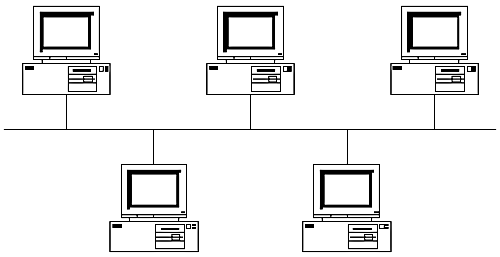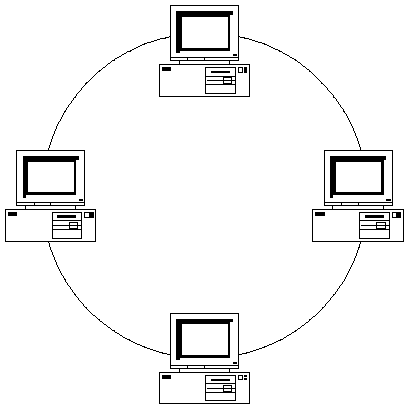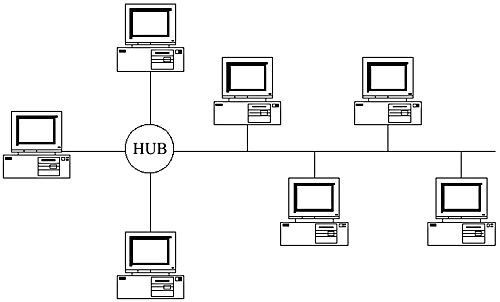27.1 Network Topologies
| |
A network topology is the physical layout of a network. The physical communication media (e.g., cables) are used to connect network components depending on the selection of a network topology. Common network topologies are bus, star, and ring. Selection of a particular network topology depends on network cost, reliability, and performance.
Bus Topology
In a bus topology, all hosts are connected to a common bus, usually a cable. This is shown in Figure 27-1. A bus is terminated at both ends with cable terminators. The cable terminators absorb all signals reaching the cable ends and stop signal reflection. The bus topology is a low-cost networking method. The disadvantage is that if the cable fails at any point, the entire network breaks down, and no data communication can take place.
Figure 27-1. The bus interconnection topology.

Star Topology
In a star topology, all hosts are connected to a central place. This central place is a network device known as a hub. The advantage of this topology is that in case of a single cable fault, only the host connected to that cable is affected. All other hosts continue to function normally. The disadvantage is that if the hub fails, the entire network fails. Thus the hub is the single point of failure in this topology. The star topology is shown in Figure 27-2.
Figure 27-2. The star interconnection topology.

Ring Topology
In a ring topology, hosts are connected in a ring structure. Data are transferred from one host to another host in the order defined in the ring. Each host in the path receives data frames , compares the destination MAC (physical) address with its own address and captures data if the two addresses match. If the two addresses don't match, the data are relayed to the next host on the ring. Figure 27-3 shows a ring-connected network. MAC addresses are explained later in this chapter.
Figure 27-3. The ring interconnection topology.

Hybrid Networks
Practical networks may be combinations of different topologies. For example, a network based on Ethernet may be a combination of a star topology and bus topology as shown in Figure 27-4.
Figure 27-4. A hybrid network consisting of star and bus topologies.

In most of the medium-to-large LANs, computers are connected to multiple hubs or switches located at convenient places. Computers connected to each hub form a star network. All of these hubs and switches are then connected to each other using a backbone cable that acts as a bus.
| |
| |
| Top |
EAN: 2147483647
Pages: 390